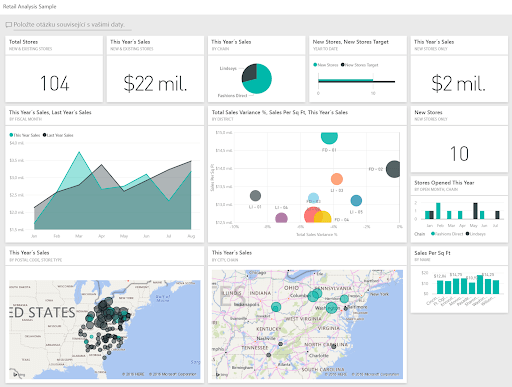Artificial intelligence today plays a key role in many industries and offers a wide range of tools that can significantly simplify and streamline work. In this article, we will take a look at several specific AI tools and how they can improve and simplify everyday work tasks. We will focus on practical tips and recommendations for both businesses and individuals.
1. Chatbots, voicebots, virtual assistants, and agentic AI
One of the most widespread uses of artificial intelligence is virtual assistants, with which most of us have probably encountered. These assistants automate basic customer interactions, saving time for employees who would otherwise have to answer frequently asked questions.
- Chatbots and voicebots can provide continuous customer support, answer common questions, and in case of more complex requests, redirect customers to human operators. This not only increases the availability of customer service but also shortens the waiting time for a response and ensures consistent service quality.
Thanks to automation, they can handle a large volume of inquiries simultaneously, reducing the workload on customer service centers and allowing operators to focus on more complex cases. At the same time, they eliminate human errors and provide quick and accurate answers to the most common questions, such as product information, orders, or technical support.
Another advantage is the collection and analysis of data from conversations, which helps companies better understand customer needs and optimize customer support processes. These technologies not only save costs but also increase overall customer satisfaction.
- Virtual assistants like Google Assistant, Siri, or Alexa can help with scheduling meetings, reminding about important tasks, or even providing basic data analysis.
This type of AI is suitable for use in customer service, for scheduling various events or reminders, or tasks.
2. AI for text processing and content creation
In the field of content creation, artificial intelligence has made significant progress. Some AI tools can generate text, analyze and edit content, or provide suggestions that assist creators in their work.
- Tools like Grammarly and ProWritingAid analyze text in terms of grammar, style, and readability, helping authors improve their writing and ensure higher content quality.
Grammarly can be used to edit texts to make them sound professional and grammatically correct. You can also add this app to your browser, where it will check your texts in real-time on any website or in emails.

- Text generators like Jasper.ai and Copy.ai can create articles, blog posts, and marketing materials based on basic prompts. These tools are especially useful for marketing teams and copywriters who need to produce large volumes of content.
AI tools of this type can significantly simplify work in marketing, copywriting, and text editing.
3. Data Analysis Tools
Companies that need to make decisions based on large amounts of data can use AI tools for analysis and prediction. These tools can process complex data and transform it into useful information that facilitates strategic decision-making.

- AI platforms for predictive analytics, such as H2O.ai, can process historical data and predict future trends, which is crucial in fields like finance or logistics.
These tools assist with data analysis and make decision-making easier based on relevant information, thereby increasing the efficiency and accuracy of strategic planning.
4. AI for Design and Creative Work
In the field of design, AI tools are rapidly evolving and significantly simplifying creative processes. Some platforms can generate graphics, videos, or other visual materials, saving time for graphic designers and creators.
- Tools like Canva and Adobe Sensei assist with designing graphic elements and provide creative inspiration based on user preferences and behavior. AI image generators, such as DALL·E, allow the creation of original visual materials based on text descriptions, which is especially useful for marketing campaigns or artistic projects.
- The latest innovation is image generation in GPT-4o. This enhanced model brings even more realistic and detailed visuals – just enter a description, and the AI will create a unique image for you in seconds. Thanks to the native multimodal architecture of GPT-4o, the model can efficiently link text and visual information. Users can use this feature to create various visual materials, from illustrations to complex graphics, opening new possibilities for creative projects and marketing campaigns.

5. Automating routine tasks
Automation through AI can significantly reduce the time spent on routine tasks and increase overall productivity. Many AI tools focus on optimizing processes that would otherwise require manual intervention.
- RPA (Robotic Process Automation) tools, such as UiPath or Automation Anywhere, enable the automation of repetitive tasks, such as invoice processing or updating data in internal systems.
UiPath uses advanced algorithms that, under human supervision, learn from large datasets until they are capable of performing tasks completely autonomously. The UiPath Studio platform also allows visual planning of automation processes using intuitive diagrams, where each diagram represents a specific work operation.

- Workflow automation using tools like Zapier or Integromat enables the connection of different applications and the automation of tasks between them.
These tools are ideal for simplifying administrative processes, accounting, or project management, helping companies save time and eliminate manual labor.
6. AI in Human Resources and Recruitment
AI tools play a key role in recruitment and human resources management, helping to identify the most suitable candidates, analyze job performance, and predict future employee needs.
- Tools like HireVue or Pymetrics use psychometric tests and interview analysis to more effectively assess candidates. HireVue, for example, processes candidates’ responses, including non-verbal elements like tone of voice or facial expressions, and assigns scores based on predefined criteria, making it easier for HR professionals to select the best talent.

- HR platforms like Workday use AI to analyze the workforce, helping managers efficiently manage teams and strategically plan staffing.
HR professionals can use these tools to streamline the recruitment process, better evaluate employees, and optimize workforce planning. AI makes their work easier by automating administrative tasks and providing data-driven recommendations for strategic decisions.
7. Automation of Online Meeting Notes
Online meetings and conferences today play a key role in corporate communication. AI tools for automatically taking notes during these meetings save significant time and facilitate the follow-up steps.
- Tools like Otter.ai or Rev.com can record and transcribe conversations in real-time, allowing participants to focus on the discussion instead of manually taking notes. These platforms then generate clear and structured notes that can be easily shared and edited.
For example, Otter.ai automatically creates meeting notes from online meetings in Zoom, Google Meet, or Microsoft Teams, while recognizing individual speakers. The notes can be edited during the meeting, ensuring maximum clarity and usability.

- AI tools like Fireflies.ai not only automatically transcribe meetings but also analyze their content and provide key insights. With them, it’s easy to track who said what, create tasks directly from the discussion, and even set reminders for important points in the conversation.
For companies that frequently hold online meetings, these assistants offer an efficient solution for processing outputs. They not only help organize the notes clearly but also ensure a clear overview of what was discussed and agreed upon, greatly facilitating follow-up steps.
AI tools have become an indispensable part of the modern workplace, and their importance is continually growing. Companies that want to remain competitive should actively seek ways to integrate these technologies into their processes. Artificial intelligence not only increases efficiency and saves time but also opens doors to innovative approaches in problem-solving, automation of routine tasks, and better data-driven decision-making.
The future belongs to those who can leverage AI to their advantage – whether it’s simplifying administration, improving customer support, or optimizing internal communication. Implementing these tools can be a key step towards long-term success.
Looking to integrate AI into your business? Our AI virtual assistants can help you.











